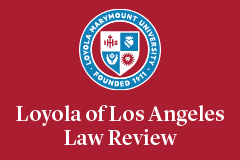Abstract
How do courts allocate deference when multiple agencies propose conflicting interpretations? While the Supreme Court has a clearly established Chevron-Mead paradigm for a single agency engaging in statutory interpretation, it has yet to articulate a method for applying deference in “shared administrative spaces,” legal jurisdictions wherein statutes task multiple agencies with implementing their provisions. The Court’s silence in this arena has allowed lower courts and scholars to develop competing and conflicting approaches to applying deference in shared administrative spaces.
This Article challenges the previously proposed rules for shared administrative spaces and proposes a new one. Courts should reframe Chevron “step zero” to determine which agency’s interpretive procedure best exemplifies congressional intent, public accountability, and agency expertise. Given the procedure-dependent strength of these justifications, courts should give preference to informal rulemaking over informal adjudications for the purposes of deference in shared administrative spaces. By adopting this approach, the Court would resolve interagency disputes in a manner that reflects established Chevron-Mead principles.
Recommended Citation
Juan Caballero,
Allocating Deference in Shared Administrative Space,
56 Loy. L.A. L. Rev. 883
(2023).
Available at: https://digitalcommons.lmu.edu/llr/vol56/iss3/3


